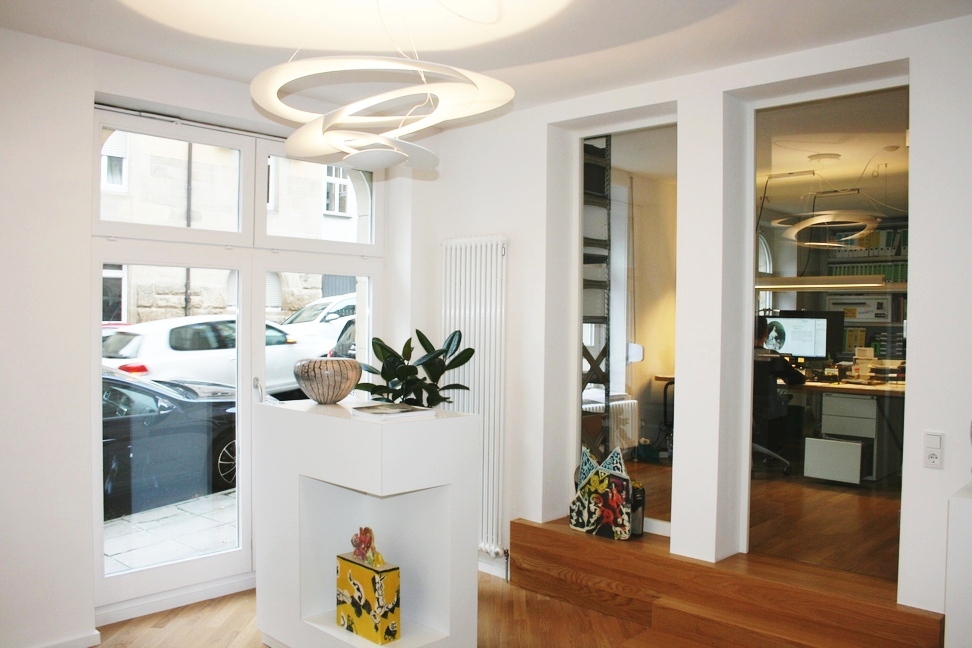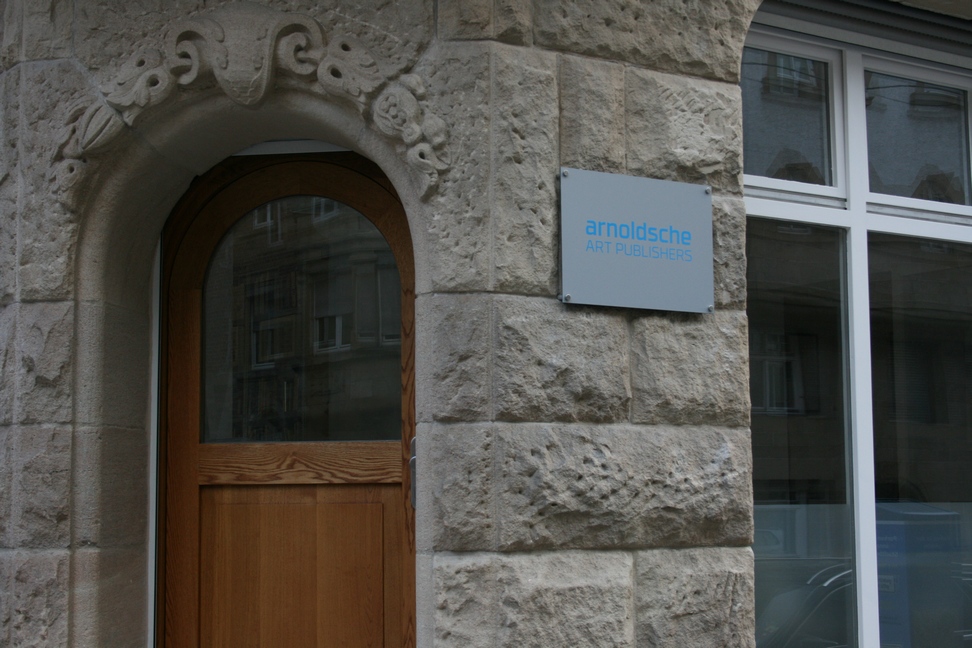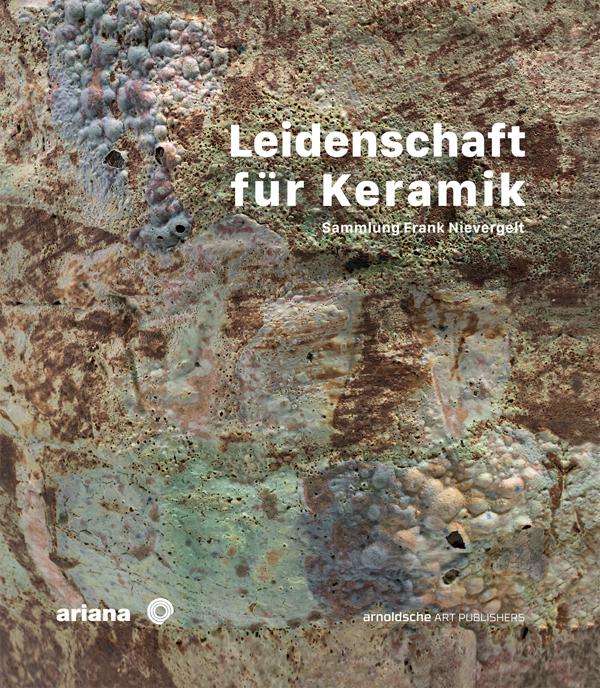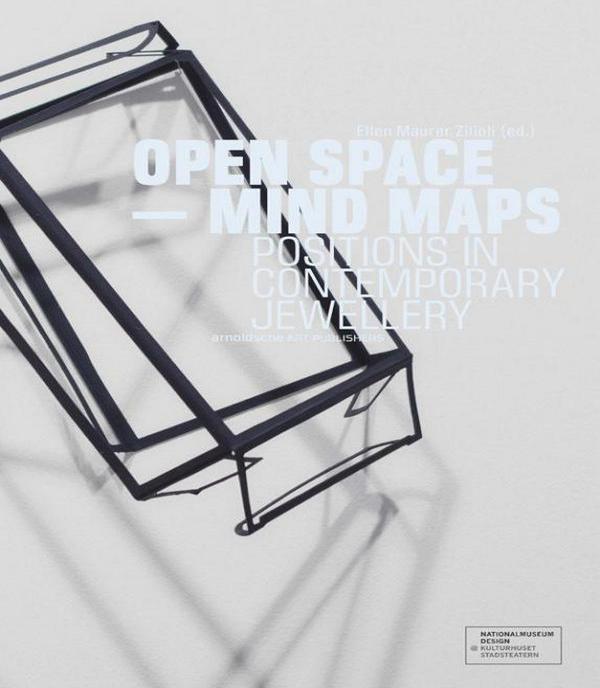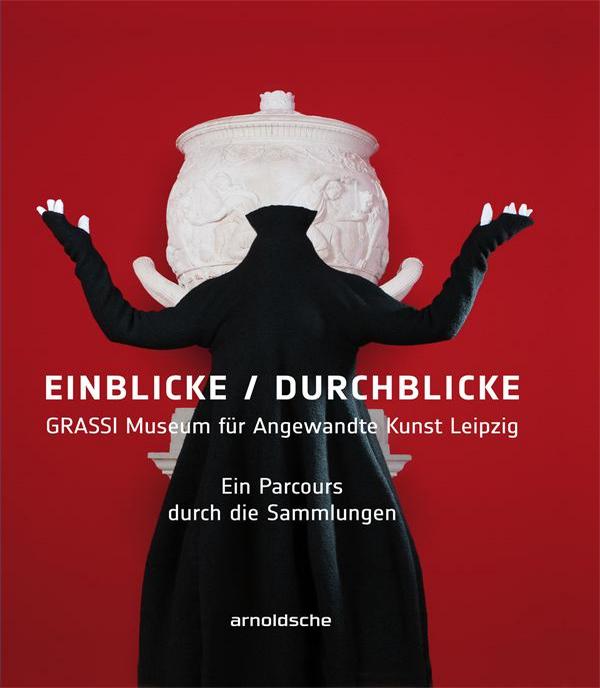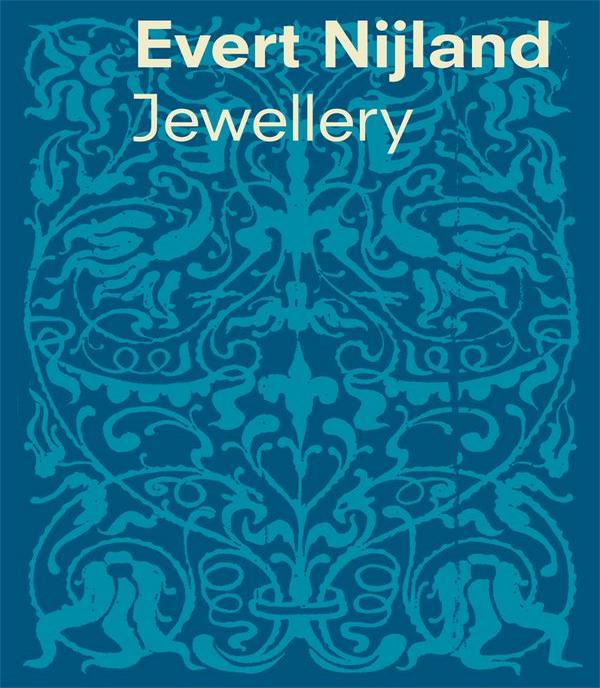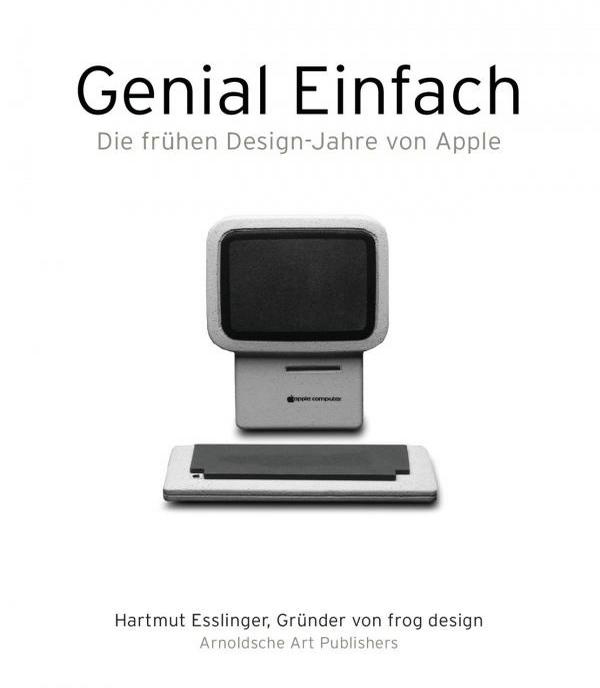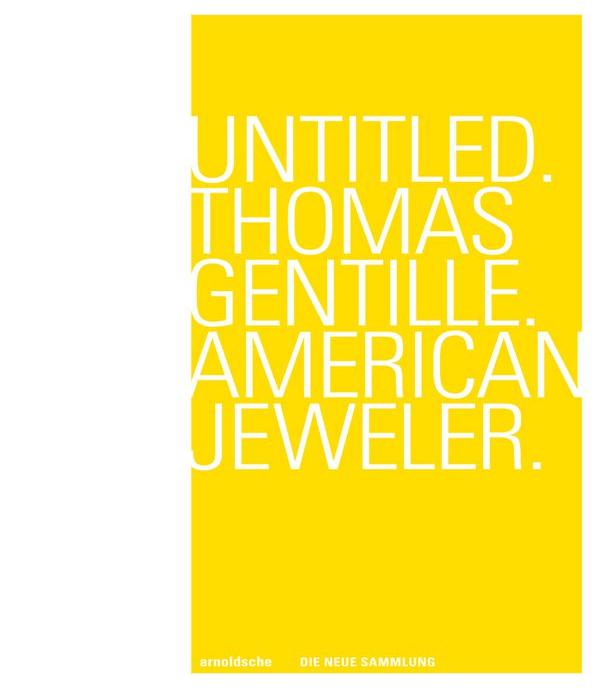Recipe for Success: Passion
…Passion for Applied Art
We spoke with Dirk Allgaier, owner of Arnoldsche Art Publishers, about his publishing house, applied art today, and the distinctive quality of the printed book.
Text: Paulina Tsvetanova
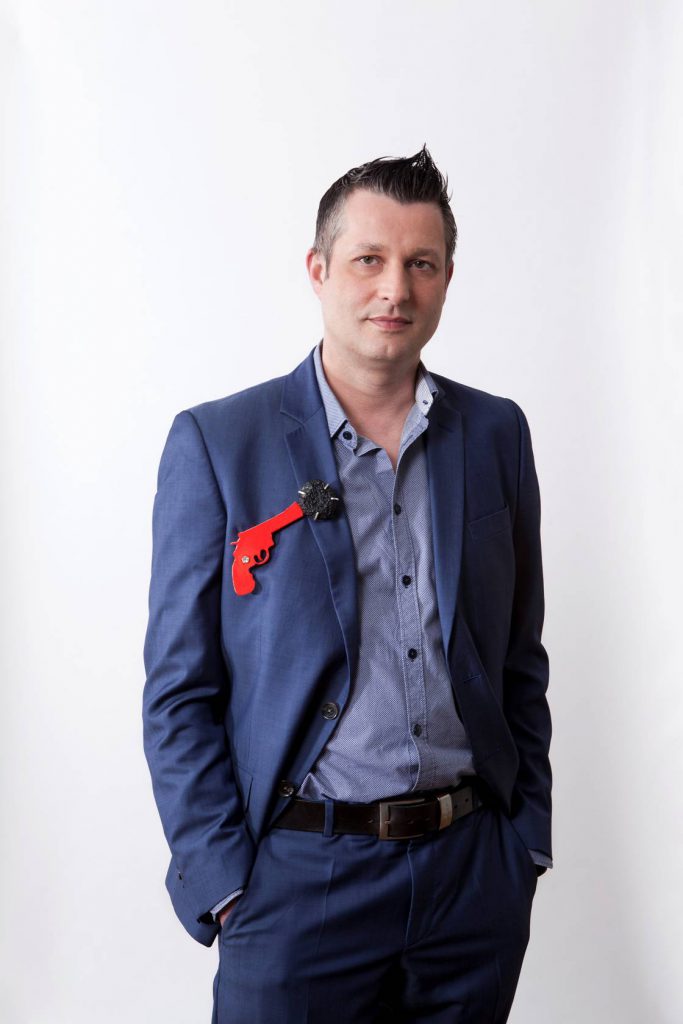
Dirk Allgaier with a brooch by Babette von Dohnanyi. Photo: Miriam Künzli
Mr. Allgaier, Arnoldsche Art Publishers is, to my knowledge, the only German publisher specializing in the field of applied art. Especially in the areas of jewelry and ceramics, you are making a considerable contribution to the publication of these arts, which are somewhat neglected in the Central European region. What makes you different from other art publishers?
On a purely organization level, as far as production and distribution is concerned, we probably do not differ so much from other art book publishers. I think it is our passion for our books and for applied art in general which sets us apart. In our publishing houses in Stuttgart you can find not only a lot of books on these topics (also from other publishers), but also exhibitions of jewelry and ceramics from numerous international artists.
Besides this small in-house collection, each of us is personally interested in these art forms. For example, I am especially passionate about contemporary ceramics, as well as the decorative arts.
Since 2015, we have also expressed our enthusiasm for these art forms in a series of exhibitions, the “Arnoldsche Weekend Art Gallery”, which takes place twice a year. We’ve had the opportunity and the great pleasure to exhibit ceramic works by Beate Kuhn and Sebastian Scheid. In addition, this summer we displayed jewelry projects by Mari Ishikawa and ceramic sculptures by Thomas Bohle in our publishing houses. In November of this year, we will continue the series with jewelry by Silvia Weidenbach and ceramics by Karl Fulle, which I am particularly looking forward to.
How do you rate the applied arts / design scene in Germany? What are its strengths and weaknesses, opportunities and risks?
The German applied art “scene” is quite small and manageable. This is, on the one hand, an advantage, because that offers opportunities for great growth. The challenge is to bring focus to the unique, unmistakable and inimitable features of the objects. One should try to get the “Brandthink” out of the minds of potential buyers, so that they are able to see, perceive and feel things again.
It’s easy to wear a piece of Cartier, Chanel or Versace jewelry, with a price tag to match, which is almost arbitrary and interchangeable. On the other hand, it’s much more exciting, communicative and socially-relevant to wear a piece by Bernhard Schobinger, Otto Künzli, Daniel Kruger or Tone Vigeland.
And at a fraction of the cost. There’s also the chance to discover talented newcomers. I can purchase a ceramic or glass sculpture at the highest level of design for a few hundred euros. And you really have to look for a long time to find unique pieces in the fine arts.
What can applied art/craft learn from art and vice versa?
In my opinion, the separation between applied and visual art is purely academic. If you are get into the adventure of ceramic arts or jewelry art or glass arts, you will soon find that these are merely different, but equivalent, highly complex artistic forms of expression that are in no way inferior to the supposedly canonical arts of painting, sculpture, architecture, photography or performance art.
The reception of these art forms, for example, is much more open in the Scandinavian countries than in Germany. Or think about the Turner Prize, which was awarded to Grayson Perry in 2003. This was a sensation, as the renowned art prize was presented to a “ceramicist”, which made headlines and showed that although the jury was aware of the value of “ceramics” as a form of artistic expression, the media was less so.
Maybe it is less the case that these arts learn from one another. Rather that they fertilize one another. In any case, with our publishing program, we are concerned with offering the so-called applied arts a forum which, in our opinion, it clearly deserves.
Just recently, I read an interview with the gallery owner Jörg Johnen in ZEIT, on the mission of his gallery for contemporary art. He draws attention to the ceramic arts that have fallen into oblivion in the last 20 years. For him, it is an exciting counterpoint to the constant sampling and tweaking of young contemporary art, to the “mouse click art”, as he says, which sooner or later gets tiresome.
He attributes to contemporary art hardly any depth of thought and experience. But that is exactly what I find in the applied arts, and perhaps it is what the visual arts can learn from them again?
Since 2015, you have been the publisher of Arnoldsche Art Publishers, where you have been working for over 20 years and have been responsible for the support of international publishing partners. Tell us a bit about your professional career, from your study of archeology to your challenges as a publisher.
In 1992, I finished my Master’s in archaeological studies. I had always wanted to work in a publishing house. So, I started to work towards a professional training certificate at Klett in Stuttgart. Part of this training was a three-month internship in a publishing house.
I did my internship at Arnoldschen. After the end of the three months, I didn’t even go back to school, but stayed on at the Arnoldschen as the first permanent employee.
In hindsight it’s already fascinating to see how publishing has become more professionalized and internationalized in these 20 years. Also I was able to really understand the transition in retail purchasing from traditional book sellers to online merchants (mostly Amazon).
Previously, the bookselling trade was a reliable way for small, specialized publishers to reach customers. This is no longer the case, far from it, since half of the bookselling trade has disappeared over the past 20 years, and many bookshops can no longer afford to carry a large assortment in their store. I see this as a major challenge to keeping our potential customers informed of our publishing program as professionally and comprehensively as possible.
Nowadays many people no longer know the experience of flipping through a printed, tactile book, of experiencing its smell. In the age of social media, many young people have missed not only the experience of reading printed media, but also the experience of the sensuous feelings associated with it. This loss has an impact on our quality of life. How do you see these developments and what do you do as a publisher?
I find it wonderful that you point out the tactile characteristics of the printed book as a medium. There is no digital substitute! But do not forget also the design of a book that is not subject to the dynamic design of an e-book. Each page – or in our perspective, double-page – is composed!
Whether an artist’s monograph or a museum catalogue, a book possesses its own rhythm, its own structure, its own sequence, which can be grasped only by going through the whole book. If a (supposedly only) analog medium, it is nevertheless a separate format – different from an exhibition, an online appearance, a database, etc. – and this format can not be totally replaced (at least so far)!
For us, to design a book is to create a visual translation of the work of an artist or a collection or a topic into the two-dimensional, printed book form. In addition, an author thinks twice about what he or she writes, it is not so “rapid fire” as on the Internet. A book provides considerations which are thought out to the end, to which one can refer back, there is nothing “rapid fire” about it.
By the way, I don’t think that young people don’t know what a book is, or don’t read. Even young people know about the experience and the value of a book — who doesn’t? More problematic is the fact that fewer and fewer people are interested in applied art. Or collect it — that is, for me at least, to surround themselves with these works of art in everyday life.
The art market may have drifted a little too far into an investment market, which makes it hard for the applied arts to keep up with the market or, on the other hand, to offer the applied arts the chance to gain credibility through a genuine, authentic presentation.
So what can we publishers do? Well, we continue to publish outstanding books of what we see as urgently noteworthy artistic perspectives from today’s so-called applied art. Should I name some books at this point? Probably not, but you should definitely be familiar with “Passion for Ceramics: The Collection of Frank Nievergelt “, the publication of an outstanding collection of wisely- and expertly-curated ceramic art from the past 40 years.
Or the publication “Barbara Cartlidge and Electrum Gallery”, which documents the gallery owner and the gallery par excellence, which was one of only three galleries which gave a voice to jewelry art in the twentieth century.
Do you have a favorite publication?
I love every single one of our publications! Among our ceramic publications, my favorite is the two-volume “Vase / Sculpture” from the GRASSI Museum Leipzig, which documents the extraordinary variety and beauty of contemporary ceramic arts and is now referred to as “the Bible of ceramic publications” by connoisseurs. But I’d also say that the wonderful ceramic monographs of the Austrian Thomas Bohle, the Norwegian Torbjørn Kvasbø or the Japanese Yasuhisa Kohyama can be counted among my “favorite” books.
As far as jewelry goes, of course, the long-out-of-print catalogue of the jewelry collection of Helen Drutt “Ornament as Art”, 2007 in cooperation with the Museum of Fine Arts Houston. But the jewelry monographs of Thomas Gentille, Mari Ishikawa and Daniel Kruger also appeal to me in their individuality and proximity to the work of the artists.
Very close are the three volumes “Fired by Passion” with more than 1,400 pages on the early Viennese porcelain of DuPaquier, which was exhibited at the Metropolitan Museum in New York in 2009.
Tell us about your current projects.
We are currently working on more than 20 publications. They are all exciting! I can tell you that much in advance. This year books are still appearing. For example, about Edgar Degas, about the graphic work of jewelry artists, the Russian Constructivist architect Boris Velikovsky, about Japanese food and its various cultural aspects, as well as jewelry made of precious stones and other materials found in the Idar-Oberstein area over the past ten years.
Even just the selection of these few books shows the great range of our publications this year. Not to mention “The Flying Leaves”, a historical collection of 15th and 16th century leaflets, a first-rate cultural treasure which we are very honored to be publishing. And all this from a small team of four hard-working, ambitious employees, all of whom strongly identify with the direction of our publishing program.
How do you envision the future of Arnoldsche Art Publishers, Mr. Allgaier?
Rosy, what else? If I shared the widespread opinion that the art book was at its end, I would have to hang up my hat! The well-made, high-quality art book has its place in our lives and thus a future. Nothing you can find online, even if it’s more-or-less well-informed, or even an up-to-date museum inventory, no Pinterest page, no Facebook account of an artist, no moderated Wikipedia entry can offer you the same value that you get from a carefully thought-out and planned book.
And then I have to go back to what I called the “visual translation” in book form, a book, especially an art book, is carefully composed, it opens up an inimitable, access to a topic which you cannot get anywhere else. Be inspired, enjoy and discover – it’s a way to discover art!
But, one should always look at the original, this is a completely different experience. I therefore recommend our “Arnoldsche Art Gallery” November 11th to 13th, for the stunning jewelery objects by Silvia Weidenbach and the inspiring ceramics by Karl Fulle, because nothing – not even a book – replaces the original!
You will find these publications from Arnoldsche at Paulina’s Friends in Bikini Berlin:

